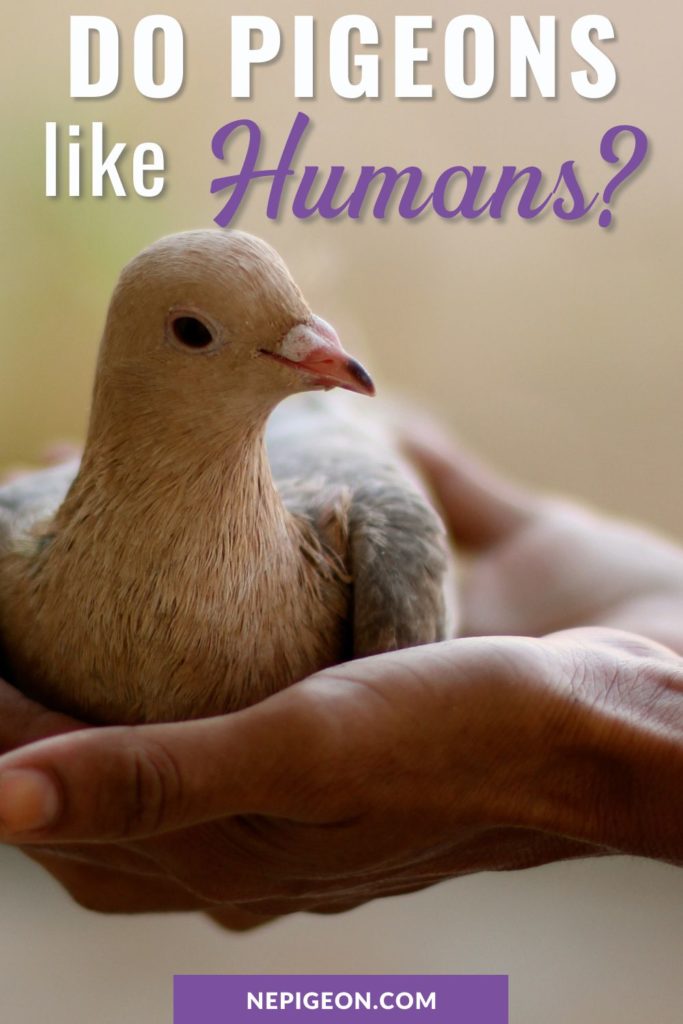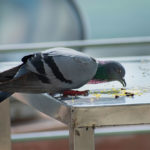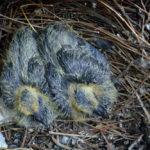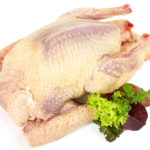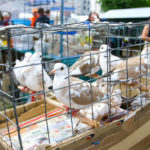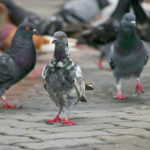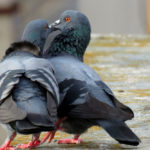Pigeons like people they know and trust—and especially people who feed them. Both female and male pigeons recognize human faces, and their expressions of affection even suggest that they can feel emotional love.
It isn’t only trained, domestic pets and carrier pigeons that seem to like their humans. Even feral pigeons recognize individual people’s faces and respond to each individual human with whom they interact in a unique way.
But, like many other avian species around the world, pigeons are intelligent birds that can sense danger and activate a primeval survival emotion that overrides rewarding them with food.
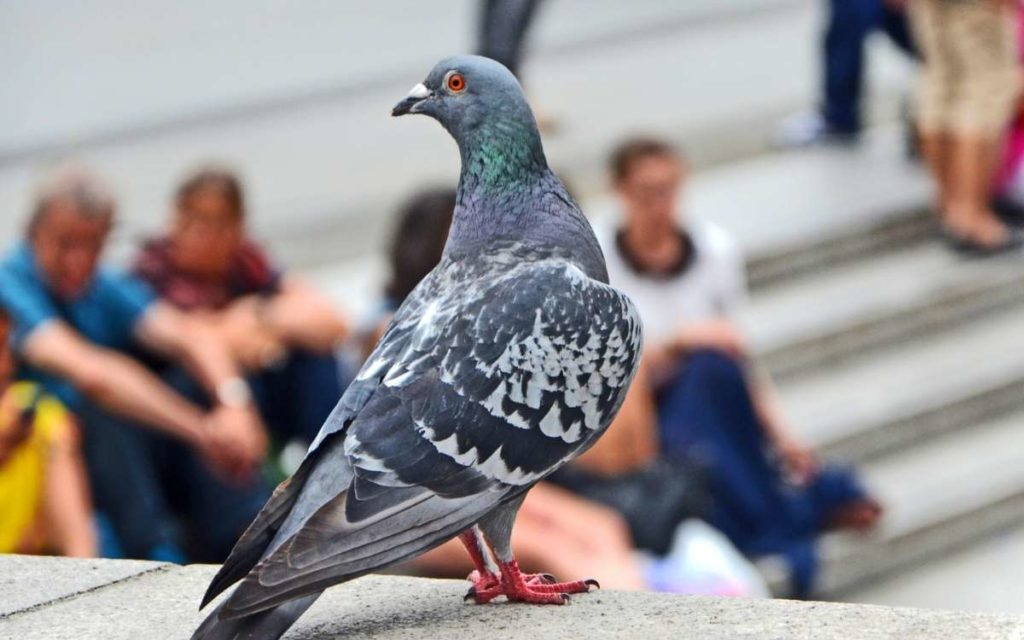
Pigeons Have a Unique Relationship With Humans
A pigeon is a domesticated dove. Pigeons and doves share the same genome (although not, of course, the same genes).
The English-language word “pigeon” is derived from the Latin word pipio, meaning to cheep. Pigeons had such a close relationship with people that their very name is synonymous with the sound that evokes feelings of affection in people.
Over their 5,000 years of association with people, domesticated pigeons have acquired a number of characteristics that their wild dove cousins lack. Domesticated pet, farm, and carrier pigeons are larger than doves.
They hold their tails erect, and may have feathered feet, known as muffs. They engage in shaking, quaking, quivering movements known as tremules, and they coo when they are happy, comfortable, and secure.
For centuries, poor people depended on pigeons for protein. Pigeons were trained as flying messengers.
Across human history, pigeons have been much more common in households than dogs or cats, but it is only recently that researchers have begun to observe, catalog, and categorize their body language.
How to Speak Pigeon
Pigeons don’t have facial muscles. They sometimes tremble in fear or pain, but they communicate their emotions with their wings, tails, and body movements.
Researchers found patterns in pigeon communications by observing pigeons in round cages (so no pigeon could hide in a corner) at the Saidpur Cantonment Public College in Bangladesh.
How a Pigeon Says “I’m Hungry”
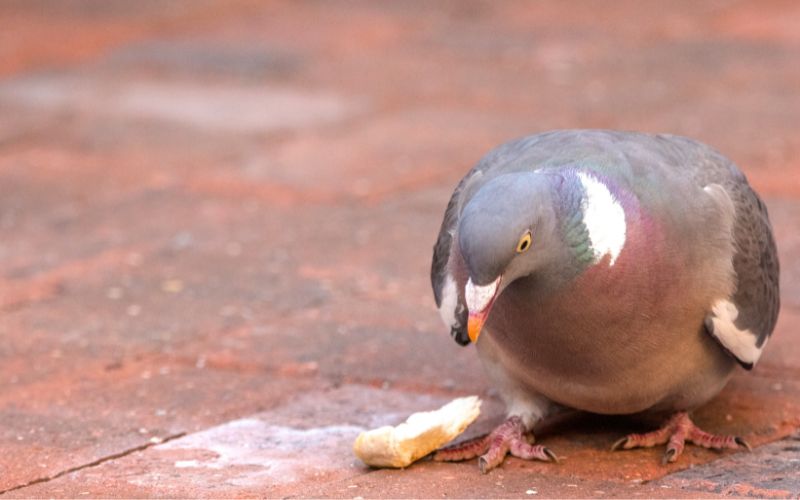
Pigeons may fly up to their humans in expectation of being fed, but the Bangladeshi pigeon experts discovered that they communicate hunger only when they finally find food. A hungry pigeon will look straight at food, not turning to either side.
This fixed gaze lasts for 5 to 10 minutes until the pigeon has eaten enough, except in adult females that will stare at their food until the last morsel is gone.
So, what does it mean when a pigeon flies up and stares at you? If you have fed the pigeon before, it is probably telling you that it is feeding time.
How a Pigeon Says “No”
Humans shake their heads when they want to communicate a negative. Pigeons do, too.
British ornithologist Derek Goodwin observed that pigeons sometimes shake their heads to get rid of a mite or some other irritant, but they are more likely to shake their heads when they are upset about something. A pigeon that looks in your general direction and is shaking its head at you is telling you “No.”
How Pigeons Say “I Love You”
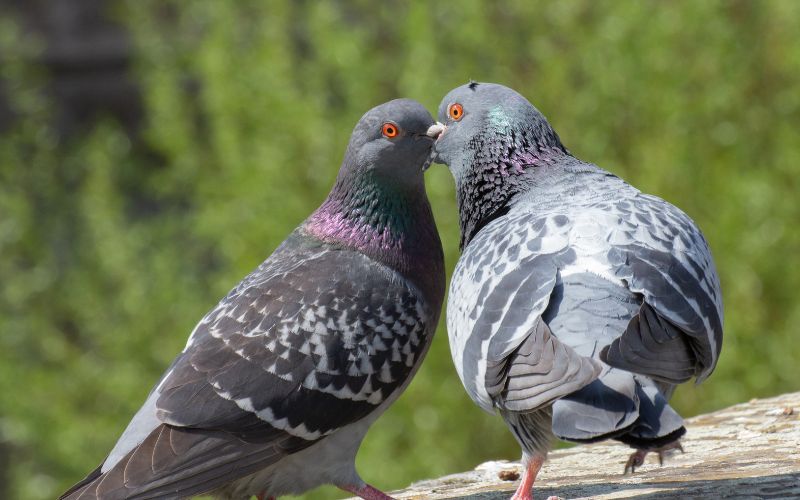
Sexual behavior in pigeons is not limited to reproduction. Mated pairs may engage in a cloacal kiss, or oral sex, not always followed by the male mounting the female.
When pigeons have completed sex, both the male and the female may puff out their feathers, fly around each other, and coo.
When a pigeon flies around you and coos, is it trying to tell you that its relationship with you is, well, orgasmic? There is an additional signal pigeons give to each other when they wish to communicate that they are sexually satisfied.
They will fly around each other, coo, and preen behind their wings. Chances are your interaction with your pigeon will not involve preening.
How a Pigeon Says “What’s That? I Want to Know More”
Pigeons both stare at a new object and bend their heads when they are curious. Bending the head is a sign the pigeon feels secure enough not to fly away from the new person, new toy, or new member of the human household.
Pigeon Chase
If a pigeon chases after a female while dragging its tail, it is seeking a mate. If a pigeon chases after you without dragging its tail behind, it wants you to feed it.
Pigeon ‘Herding” Behavior
About a week before egg laying times, male pigeons may follow their mates around, constantly at their tails, driving them to their nest. This behavior ensures that the female is secure and in the nest when the eggs are laid.
What It Means When a Pigeon Ignores You While It Is Incubating Its Eggs
Both male and female pigeons take turns sitting on their eggs. Researchers have discovered that the pituitary gland in the brains of both males and females releases the bonding hormone prolactin while parents are incubating their eggs.
They become emotionally attached to their young before they hatch. Estrogen and testosterone levels in pigeons fall when they brood, but they increase quickly once again if eggs are lost.
If a pigeon ignores you while it is incubating the eggs in its nest, it is telling you that it is in love with its eggs. You have to wait your turn for affection.
How a Pigeon Tells You It Is Sick
Researchers have discovered that pigeons usually sleep with one eye open and one eye closed for safety. When a pigeon has both of its eyes closed, or both of its eyelids lowered about halfway, it is usually sick.
Telling Babies It Is Time to Feed Themselves, Telling You to Scram
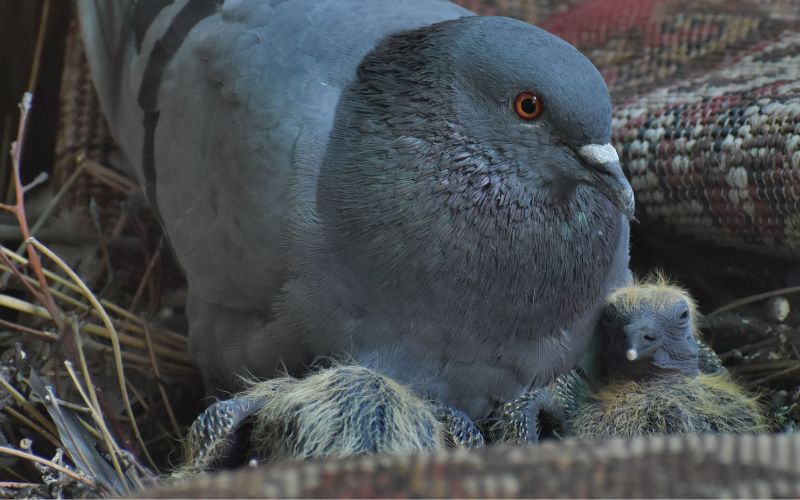
Pigeons produce and regurgitate “milk” to feed their babies for up to 40 days after they have hatched. They do this as long as prolactin levels remain elevated in their bodies.
As prolactin levels in the female fall, she shoves the squabs away. But because prolactin levels in the male stay elevated longer, he continues to feed the young for a few days more.
Female pigeons tell their babies it’s time to leave the nest by shoving them aside or standing up to them. It is highly unlikely that a pigeon will try to shove you aside, but it may tell you it wants to be left alone by standing up to you.
How a Pigeon Tells You It Is Angry
Pigeons are gentle creatures. They only rarely attack in self-defense. However, when a pigeon nods its head at you, points its beak at you, and its feathers seem to stand on end, give it space. It is upset and ready to attack.
Do Pigeons Bond With Humans?
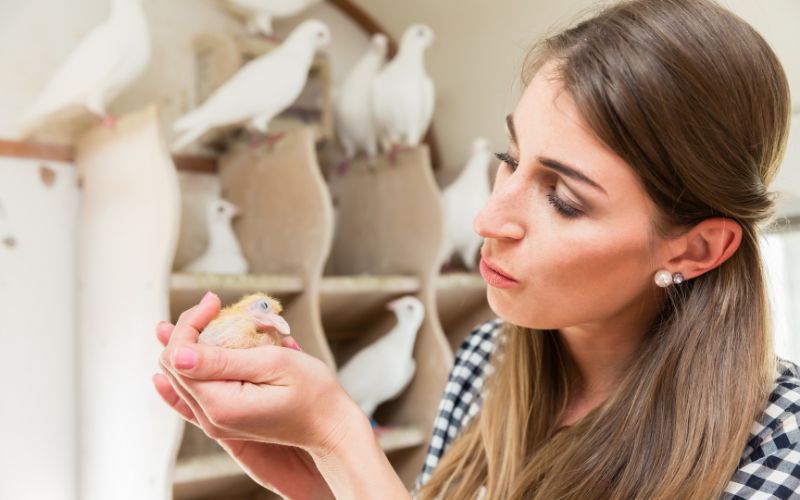
Now that you have a good idea of how to read a pigeon’s body language, the next question is, do pigeons bond with their humans?
Both pigeon fanciers and scientific researchers confirm that they do.
There are reports of pigeons that attempt to bond with humans as if they were mates. There are more reports of pigeons that latch onto humans as if they were pigeon parents.
Typically, these are pigeons adopted as house pets when they were just a few weeks old. These pigeons are hand fed and completely dependent on human support. But even feral pigeons know which humans will feed them and which humans will shoo them away.
Now let’s consider some specifics of pigeons bonding with people.
Do Pigeons Like Being Petted?
Pigeons like being petted. They react to being petted in much the same manner as dogs or cats. If a pigeon knows you and has had time to form a bond with you, it will enjoy being petted, riding on your head or your shoulder, and gently snuggling up with you, especially on a cold day.
It’s safe to pet pigeons. Pigeons aren’t inherently dirty birds. The problems with pigeon poop from feral birds come from providing them with relatively few safe places for feeding during the day and roosting at night.
Pigeons that are raised in a cage with the ordinary hygiene you would provide for any other bird stay safe from mites and ticks and free of zoonotic diseases.
In some ways, pigeons are the ideal pet bird. Tropical birds like parrots can be socialized, but they are not really domesticated. Thousands of years of close association with people have given pigeons the ability to reciprocate human affection.
Can Pigeons Recognize Human Faces?
Pigeons can recognize people by their faces, even when they are wearing different clothes. An experiment conducted by a researcher at the University of Paris Ouest Nanterre La Défense named Delila Bovet found that it only takes a single encounter for pigeons to remember the faces of friends and foes.
Dr. Bovet had two research associates of similar build and skin tone wearing lab coats of different colors go to a park in the city center to feed the pigeons. One assistant put out food and quietly allowed the pigeons to feed. The other assistant put out food but shooed the pigeons away.
The research associates switched lab coats and returned to the park. Despite the fact that the lab coats covered 90 percent of their bodies, the pigeons recognized them. They avoided the research assistant who had shooed them away and flocked around the research assistant who had let them feed in peace.
Do Pigeons Understand Human Emotions?
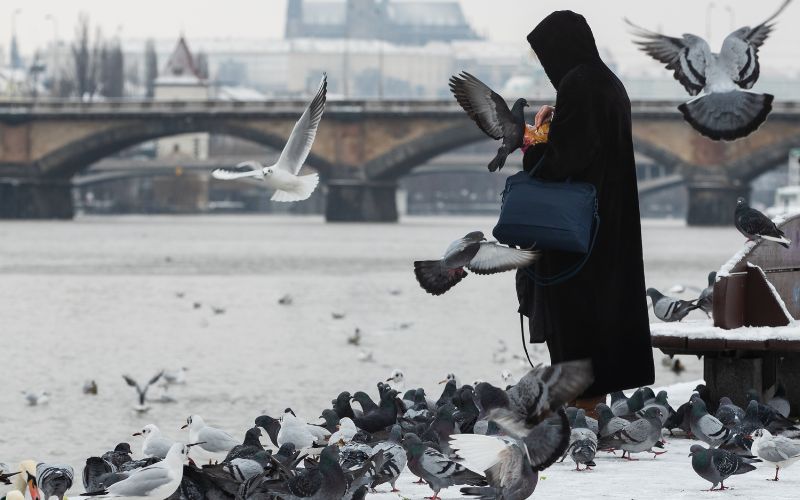
Pigeons understand people by observing human eye movements. Scientists have long known that birds observe potential predators and threats (including humans) looking in their direction.
Pigeons sometimes treat people as if they were big, featherless birds. Any emotion a pigeon can show toward another pigeon can display to a human.
Pigeons can relate to love, anger, security, and danger. But they do not have the life experience to relate to people on the same level.
Do Pigeons Understand Human Language?
Pigeons understand human language on at least the same level as a chatbot or the older forms of voice-activated AI. That is, they associate certain words with actions that are required of them that may earn a reward.
Pigeons can learn to come when you call them. They can learn to flap their wings on command and to fly through hoops. They can be potty trained. One group of researchers trained pigeons to distinguish between paintings by Picasso and paintings by Monet.
All of these abilities require the ability to understand important words. That doesn’t mean that pigeons can be trained, say, to read a newspaper. but they can connect with humans through simple, repeated spoken words.
